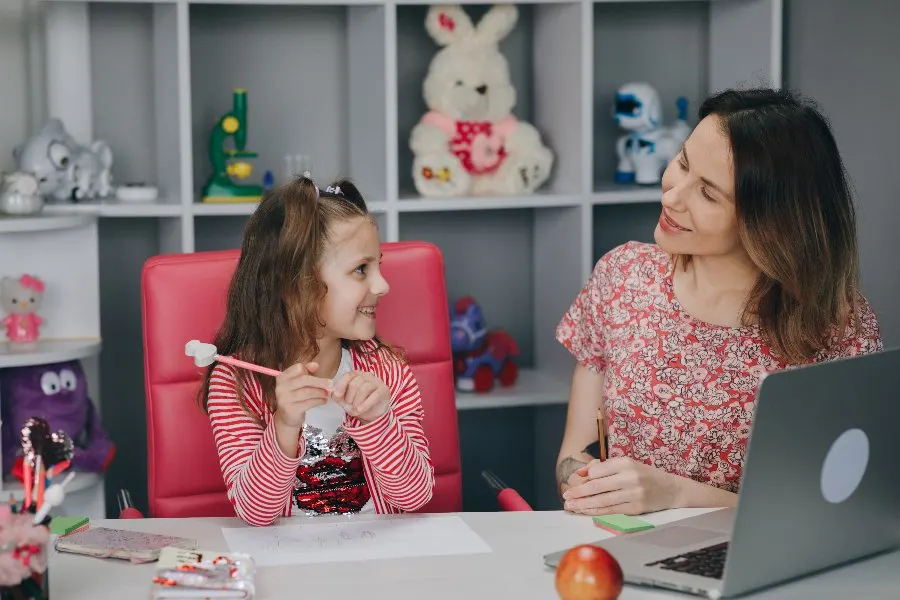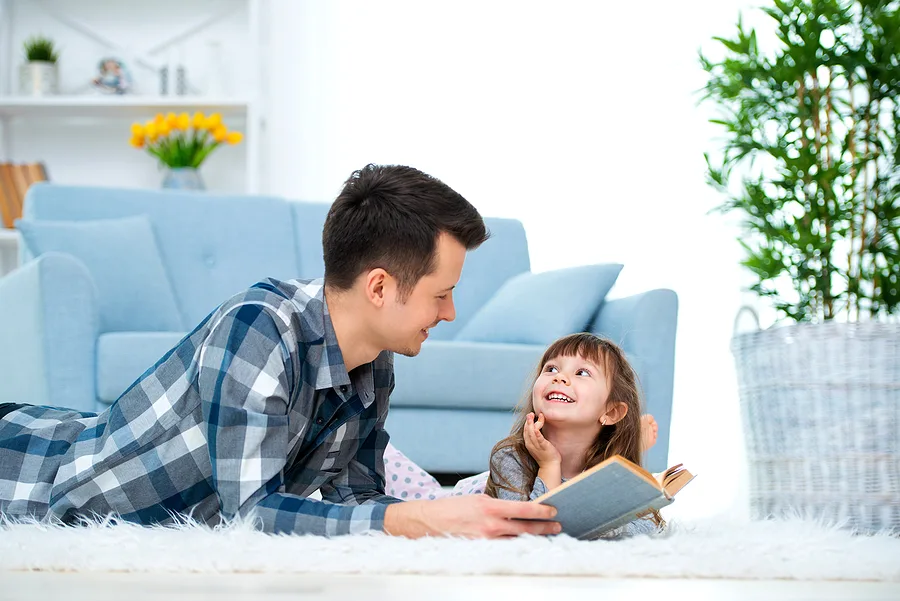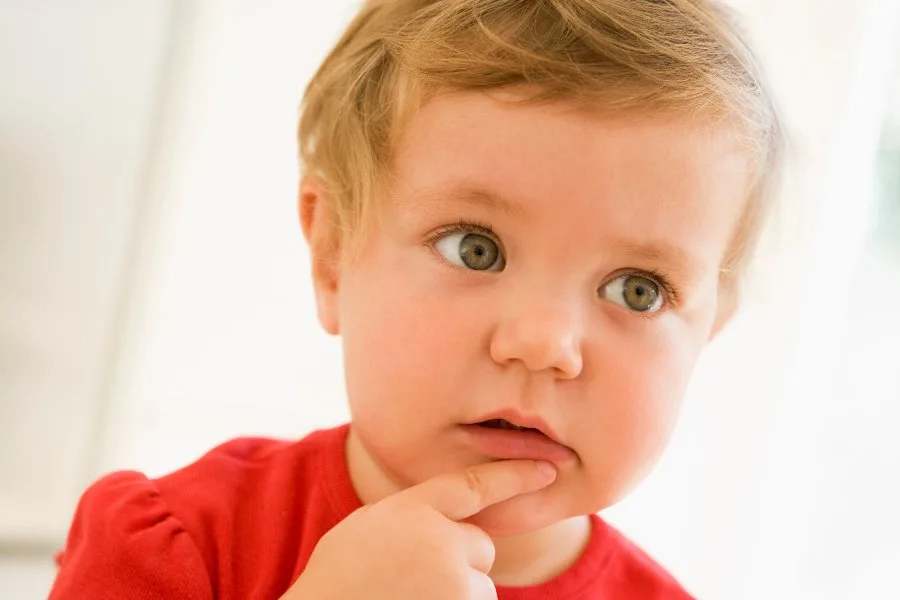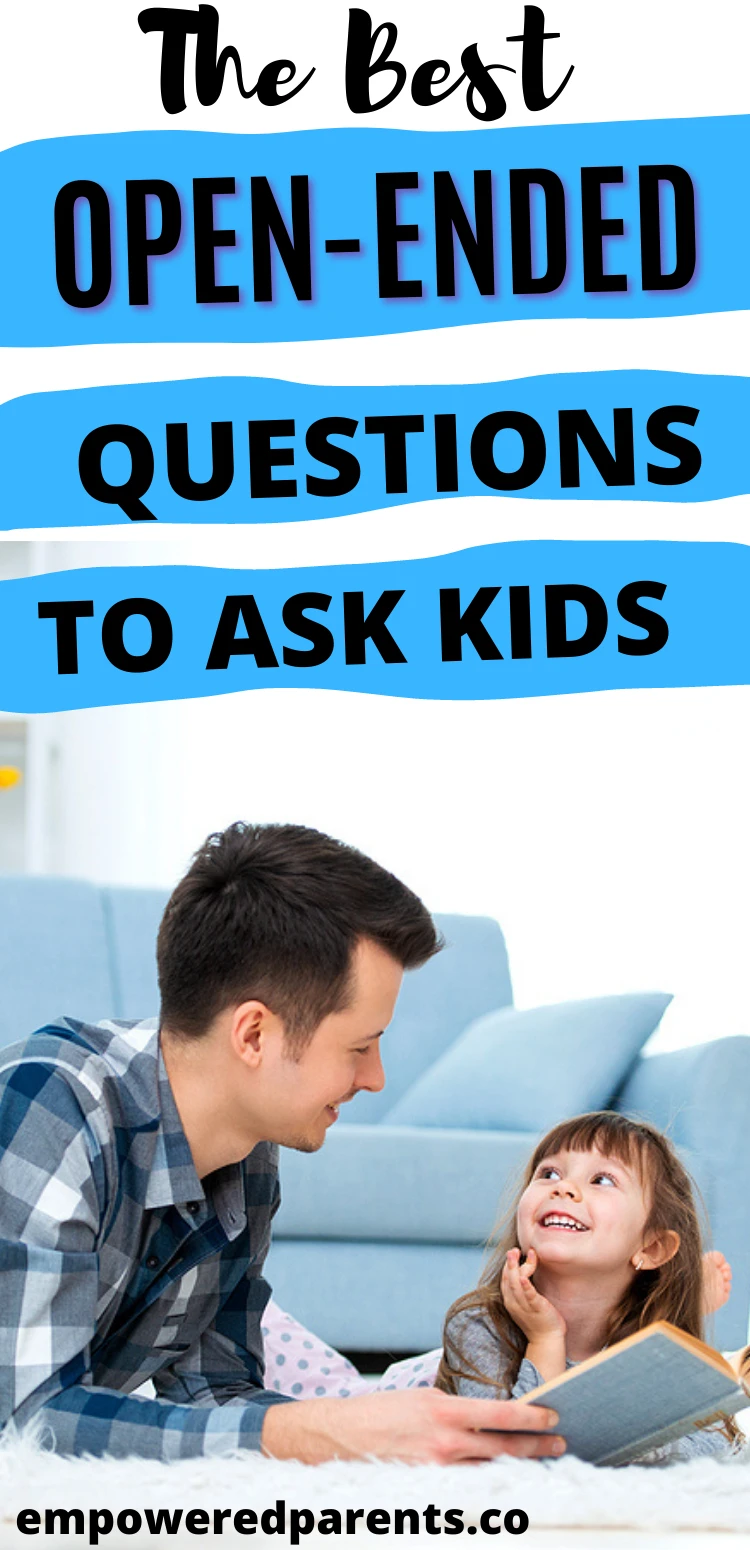Asking kids questions with open ends provides helpful information about their critical thinking skills.
Here is a look at what they are, the benefits of asking open-ended questions in early childhood and some examples to use at home and school with your kids.
What are Open-Ended Questions?
Open-ended questions are those things we ask our children that do not have defined, “yes/no” or “either/or” answers.
While closed-ended questions for preschoolers could ask them to explain a concept or to restate something you have told them, the open-ended type builds the higher-order thinking skills identified in Bloom’s taxonomy.
These skills include their abilities in evaluating, applying and analyzing information, in addition to their skills in creating something new.
For example, lower-level thinking skills could involve answering questions showing an understanding that secondary colours can be made by combining primary colours or even remembering that yellow plus blue makes green.
Examples of open-ended questions would be:
- “What can you do if you want to make the forest green in your picture but you have no green paint, crayons or markers?”
- “What other colours of paint can you make out of these on the table?”
- “What do you think could happen when we add some white paint to this colour?”
Benefits of Open-Ended Questions in Early Childhood
Using open-ended questioning with preschoolers has a wide variety of positive outcomes:
- Encourages problem solving
- Offers opportunities to give opinions and express feelings
- Motivates creativity and use of the imagination
- Encourages the use of more language and builds wider vocabulary
- Opens the way for more communication between everyone
- Gives children the sense that their answers are important and matter

Types of Open-Ended Questions
Adults ask many open-ended questions naturally without giving much thought. However, asking questions based on Bloom’s taxonomy and for a variety of purposes like the following is a good, sound practice.
1. Forming Connections
Children learn new facts more easily when they can connect to the information they already know.
For example, to lead into a preschool unit about animals of the forest, you could ask them questions about their prior experiences with any animal.
They can then connect any additional input with what they already know to more easily form new understandings.
2. Making Predictions
A prediction is like an informed guess. In real life and in literature, children can be asked to predict what happens next based on previous information.
This is easy and fun to do while reading to them. Before turning the page ask, “What do you think could happen next?” or “What if…?”

Based on what has already happened and what they know about the characters, kids can then make informed guesses.
3. Giving Opinions
“Why do you think…” and “What do you think about that?”
Young children can give an opinion and tell what they think based on their previous experiences, their personalities and their feelings on certain topics.
An important aspect of this is for kids to learn that their peers each have their own opinions that could be different from their own, which are also to be respected and valued.
4. Making Inferences
In real life or in literature, children learn and make suggestions about “why” something is happening.
“Why was Jack’s mother upset when he came home without the cow and with only a handful of beans someone had told him were magical?”
5. Solving Problems
“How can we fix this problem?”

Situations can be based on discussion (“How can we stay warm if the heat goes out?”) or in reality (“How can we make this toy car travel faster as it comes down the ramp?”).
Kids use their pre-existing knowledge to offer possible solutions.
6. Organising & Identifying Patterns
The world around us is made up of patterns that we see and experience.
Ask questions that urge children to compare, looking for similarities and differences. “In what ways are pet dogs similar to wolves?” And “In what ways are they very different?”
7. Elaborating & Imagining New Creations
Children already have many of the tools to become inventors! For example, while exploring with wooden blocks, ramps and toy vehicles, ask them questions about why things work in this way. Then challenge them to suggest new designs that work even better or differently.
Examples of Open-Ended Questions
Although different phrasings can be used for questions, they can often begin with “who, what, where, when, why, how,” such as the following suggestions:
- What do you think the problem is in this book, based on the cover?
- What do you think we should wear outdoors after seeing the weather forecast?
- What makes someone a good friend?
- What is another story we have read that is like this one?
- How do you think _______ is feeling right now?
- How do you feel when ________ happens?
- What was your favourite activity today? Why do you think you feel that way?
- What do you think happens next?
- What makes you feel afraid?
- What do you think happens to the characters after this story ends?
- What made you feel proud today?
- What can you tell me about your picture/project?

- How did you do that?
- When do you think that could happen?
- How could this be done a different way?
- Why do you think that happened?
- Why did you do that?
- What made you laugh today?
- Who in the story would you like to have for a friend? Why?
- What is your favourite part of the day?
- If you were rich, what would you use your money for?
- How can we help someone who is being bullied?
- What do you like most about yourself?
- How can you make that work even better?
- What else does that remind you of?
- What do you like/not like about that?
- Which material do you think would work best for this purpose?
- How did you learn to do that?
- What if we did that differently?
- Where do you think we could find others like that?
- How did you decide that?
- What else can you tell me about that?
- Why is _______ doing that?
Some children feel very at ease answering open-ended questions, especially those with assertive personalities or wide vocabularies.
Kids who tend to be more introverted or who find it to be more difficult to express themselves in words could find answering these types of questions to be more of a challenge. The answer is to offer practice every day!
You can also think aloud to model the process for children. “I wonder what I should put on when I go outside today. I see that the sky is cloudy and the forecast shows rain. I should probably wear my jacket with the hood, just in case!”

